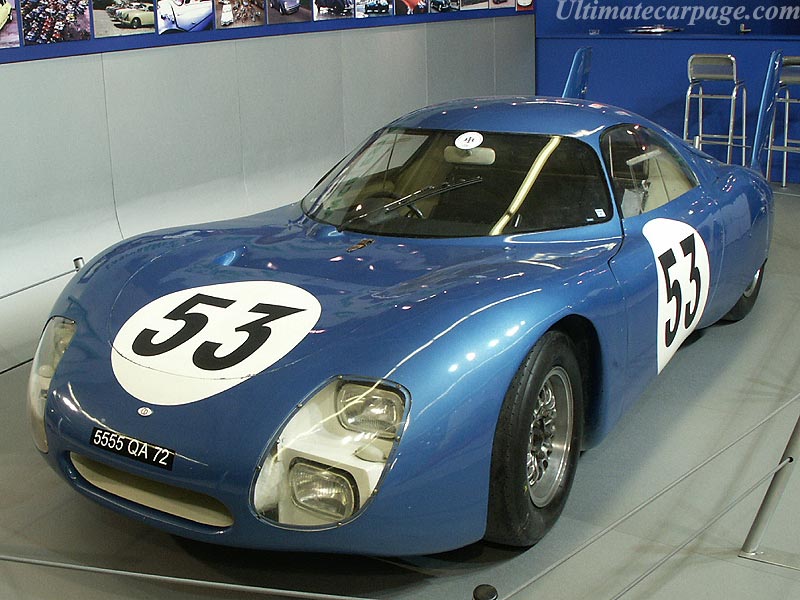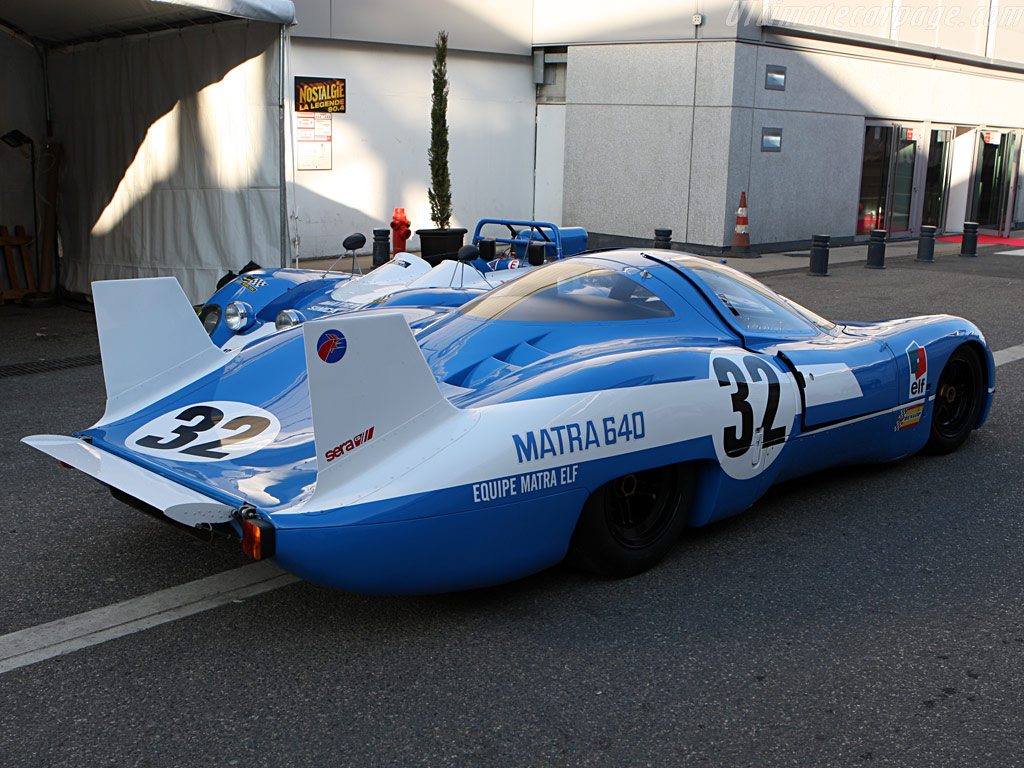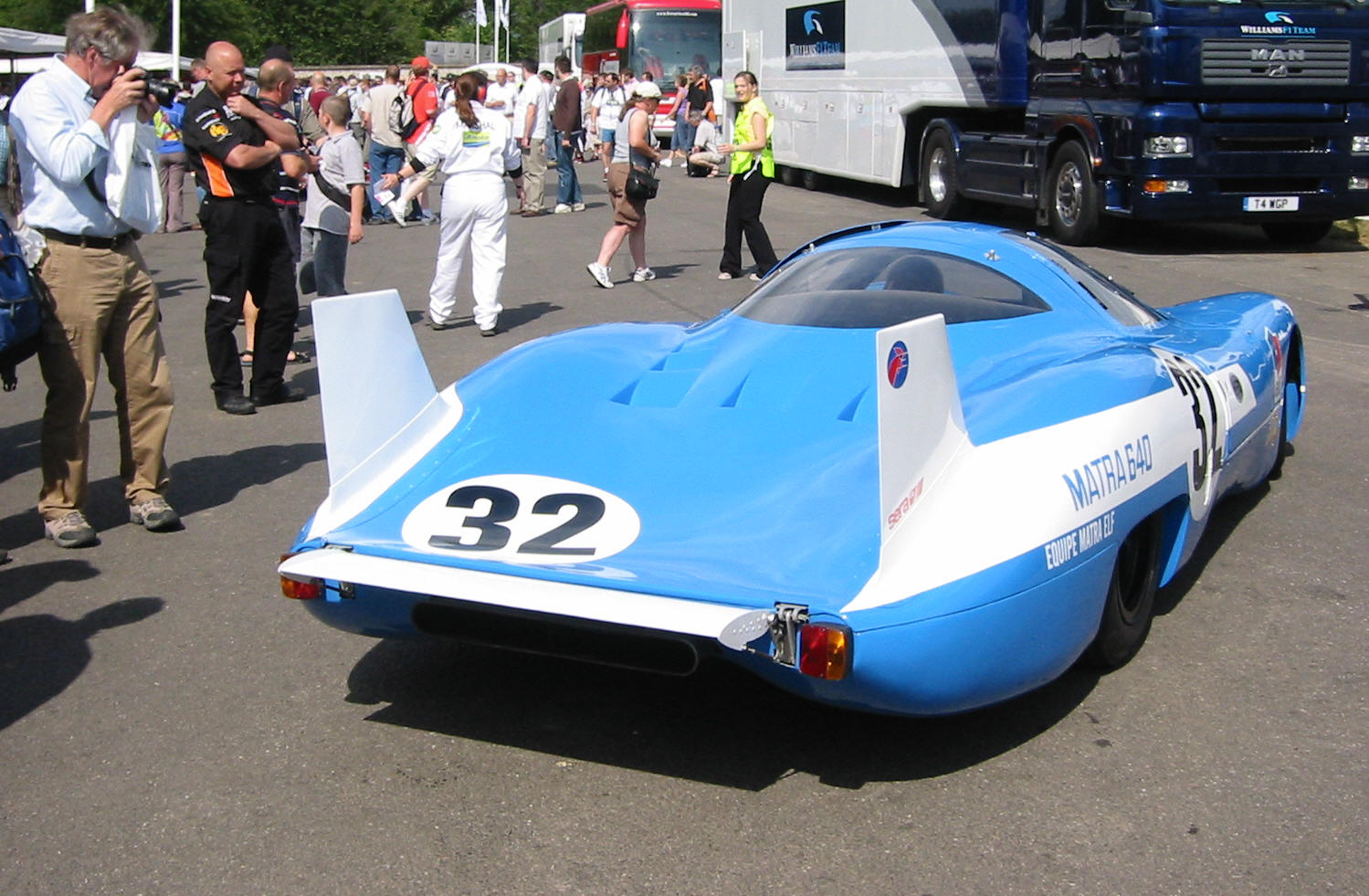Quote:
Originally Posted by Rokeby

I note that the rear rudders/vertical wings/whatever are not aligned with the cars fore-aft centerline.
Instead, they form a separated V with the open end pointing forward.
Is this because that's the angle of the slipstream at that point?
|
I think you are right -- if the rear wheel track was narrowed, then the air flow would be more straight toward the back. But I think the air does probably flow up and over the rear fenders.
This car is reported to have a Cd of just 0.13; which is obviously excellent. The top speed of ~250KPH / 155MPH with the 1L 2-cylinder engine would seem to confirm this.
I also found a later version of this car from 1967, called the Panhard CD Peugeot 66C:




 Panhard CD Peugeot 66C LeMans 1967 | Flickr - Photo Sharing!
Panhard CD Peugeot 66C LeMans 1967 | Flickr - Photo Sharing!
Edit: another variation that is obviously "related" but it has significant differences, called
Matra 640:



Quote:
|
MATRA-SIMCA MS640 V12 - The tyre drop body of the MS640 V12 was the work of Robert Choulet (°1935), a former engeneer at CD, where he introduced already the rear fins. It was an absolutely revolutionary project. Unfortunately the body, tested in the wind tunel, is slightly deformed at high speed. That is what happens on April 16, 1969, when the car is tested on the straight of Hunaudières (the EN138, closed for traffic that day). The air pression makes that the rear of the car rubs the track surface so that Henri Pescarolo looses control over the car being destroyed. Up to now the car remains the centre of heavy polemics. A group of former mechanics, working together with the 69 years old Choulet, rebuilt the 640, and wishes to prove that Jean-Luc Lagardère was wrong when he refused to let built a new MS640 after the first was destroyed. Fact is that Choulet was very unhappy with that refusal and that by October 1969 he quit Matra and co-operated with Porsche on the aerodynamically 917LH tyre drop body. PICTURE: François Hurel, op.cit., p. 62.
|
Aha! This is the connection the long-tailed Porsche...